Data Compression w/ Edge node
caution
Currently, SENSR Edge node is in the beta support stage and available only on Ubuntu 20.04 with AMD64 architecture.
Background
SENSR, at its core, is a system that receives inputs from LiDAR and performs 3D perception tasks. The data transmitted from LiDAR can be quite substantial and in cases where a physical connection like network cables crossing roads is not viable, wireless communication through WiFi, 5G, LTE, and similar means must be used. However, this isn't always cost-effective and constraints such as bandwidth limitations can lead to issues like packet loss, reducing the quality of data received by SENSR. To tackle these challenges, it becomes necessary to minimize the sensed information from LiDAR without impacting the quality of perception.
This is where SENSR Edge comes into the picture. It is not just a simple data relay between the LiDAR and the actual perception node (Algo node), but rather, it is a crucial intermediary that effectively reduces the volume of data that needs to be transmitted.
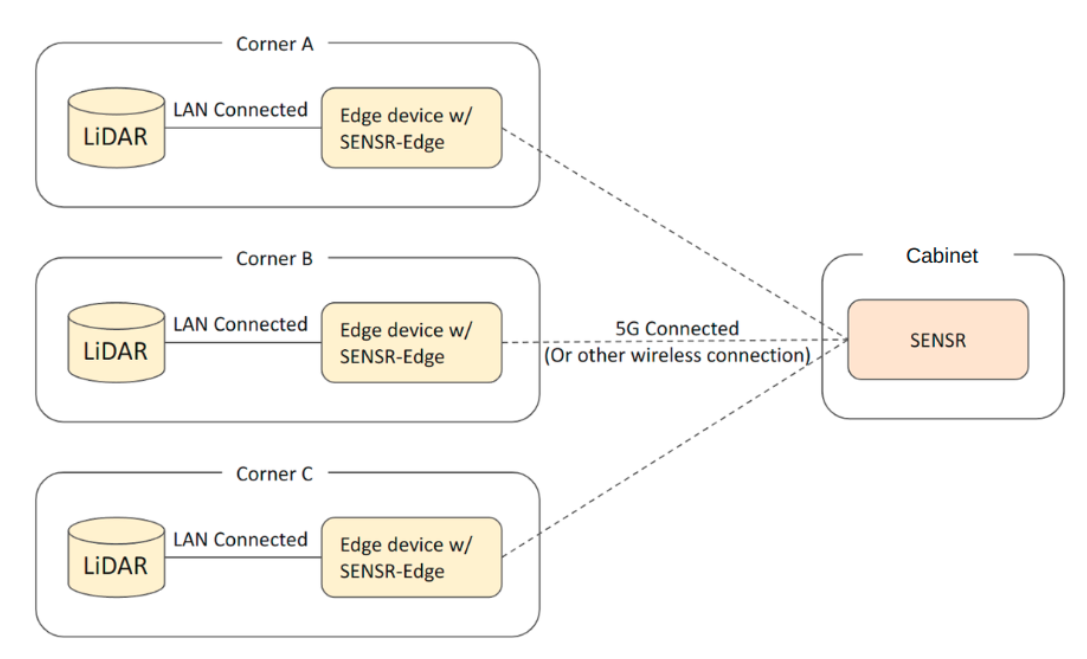
How it works
Edge node reduces the data bandwidth using 3 methods:
- Filtering
- Downsampling
- Data compression
The amount of data reduction is fully configurable and can be modified under the Edge node tab in the Algo node Parameters. More detailed information can be accessed from here.
How to use
- In the SR Launcher, add the machine you intend to use the Edge node on.
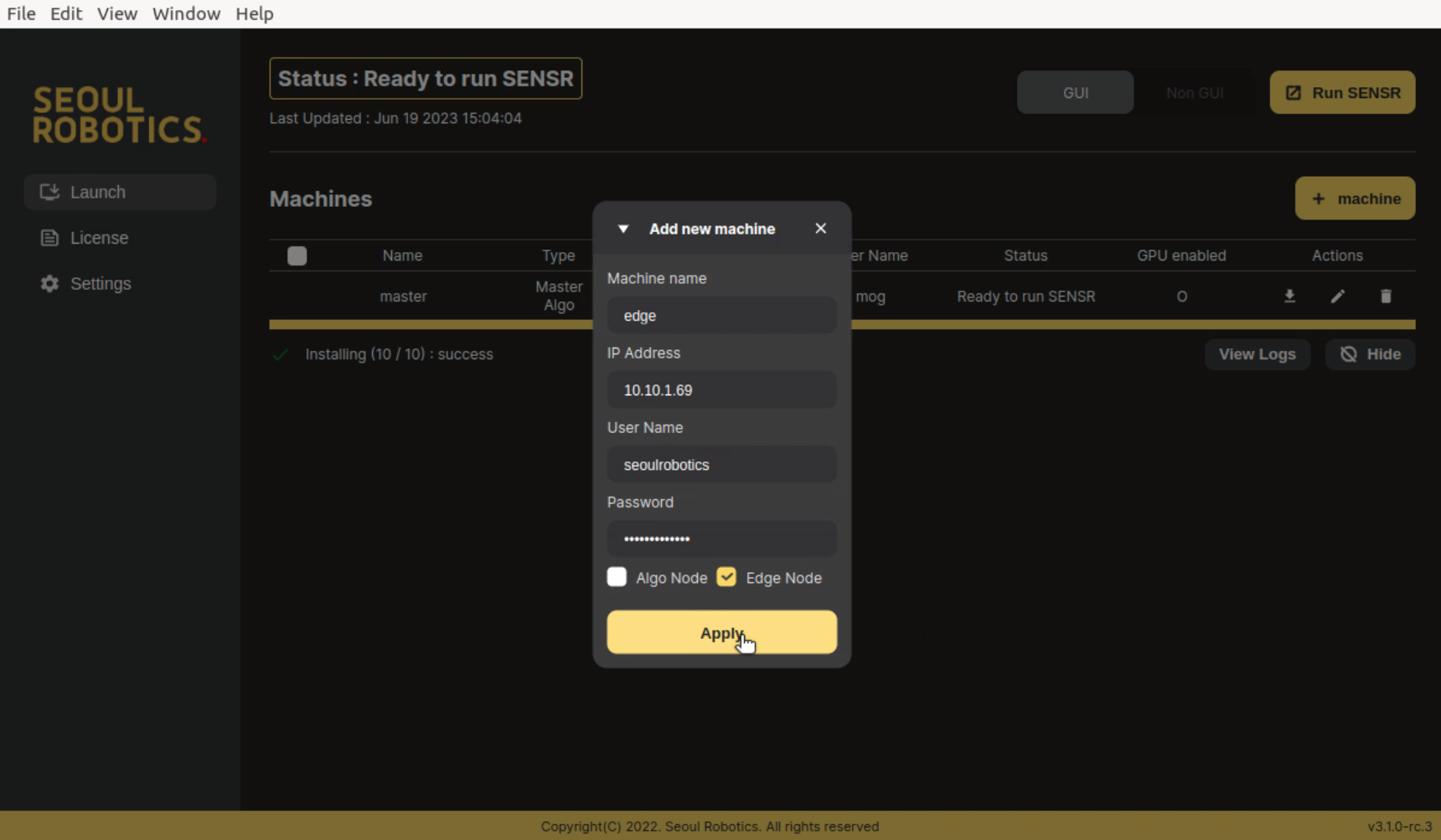
- Install the Edge node on the designated machine.
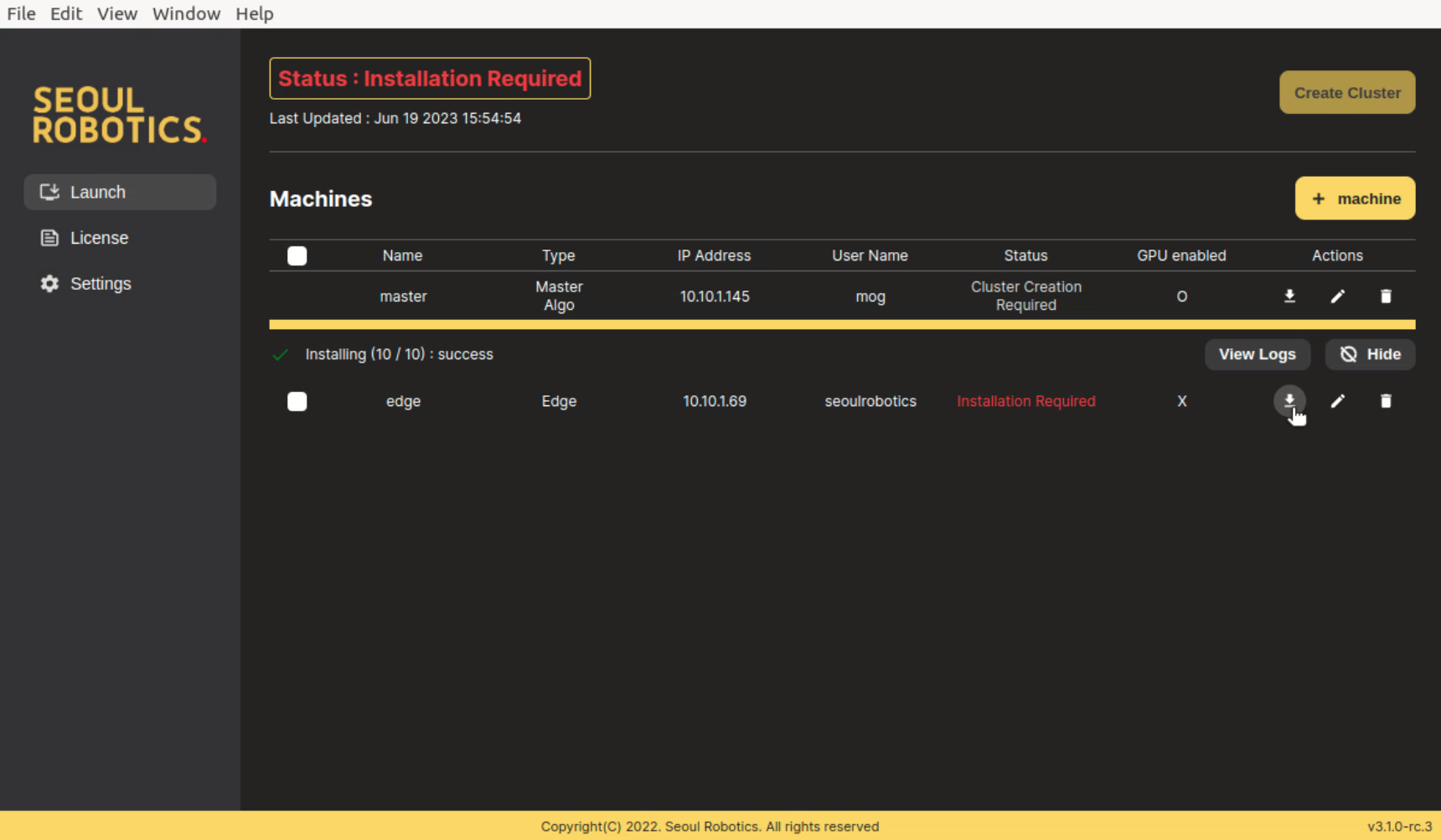
- Recreate the Cluster and run SENSR.
- Under the Algo node, add the Edge node that will transmit data to that particular Algo node.
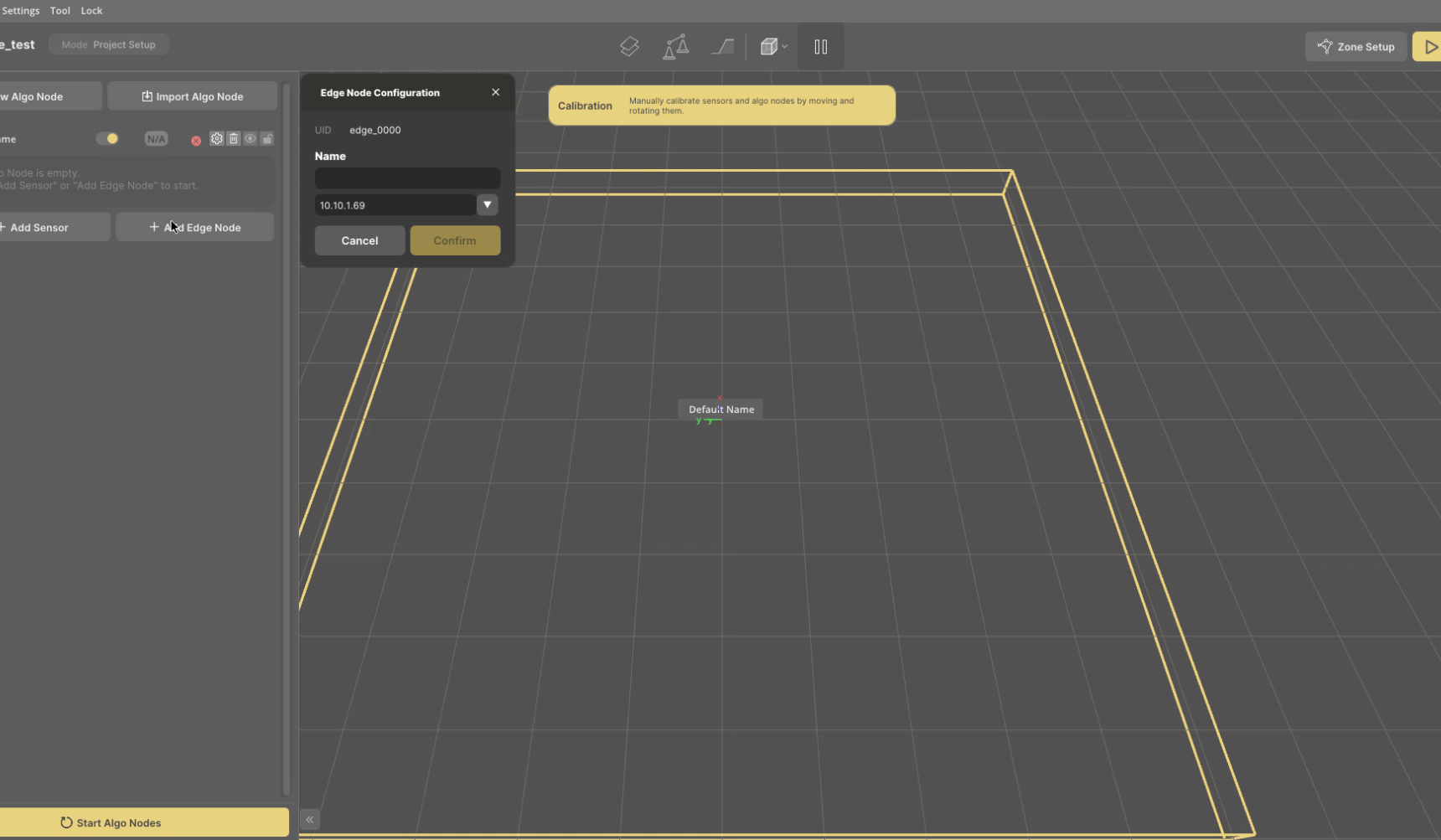
- Add the LiDAR. You need to tick
Connect to Edge Nodeand select correspondingEdge Nodethat LiDAR will send the data to.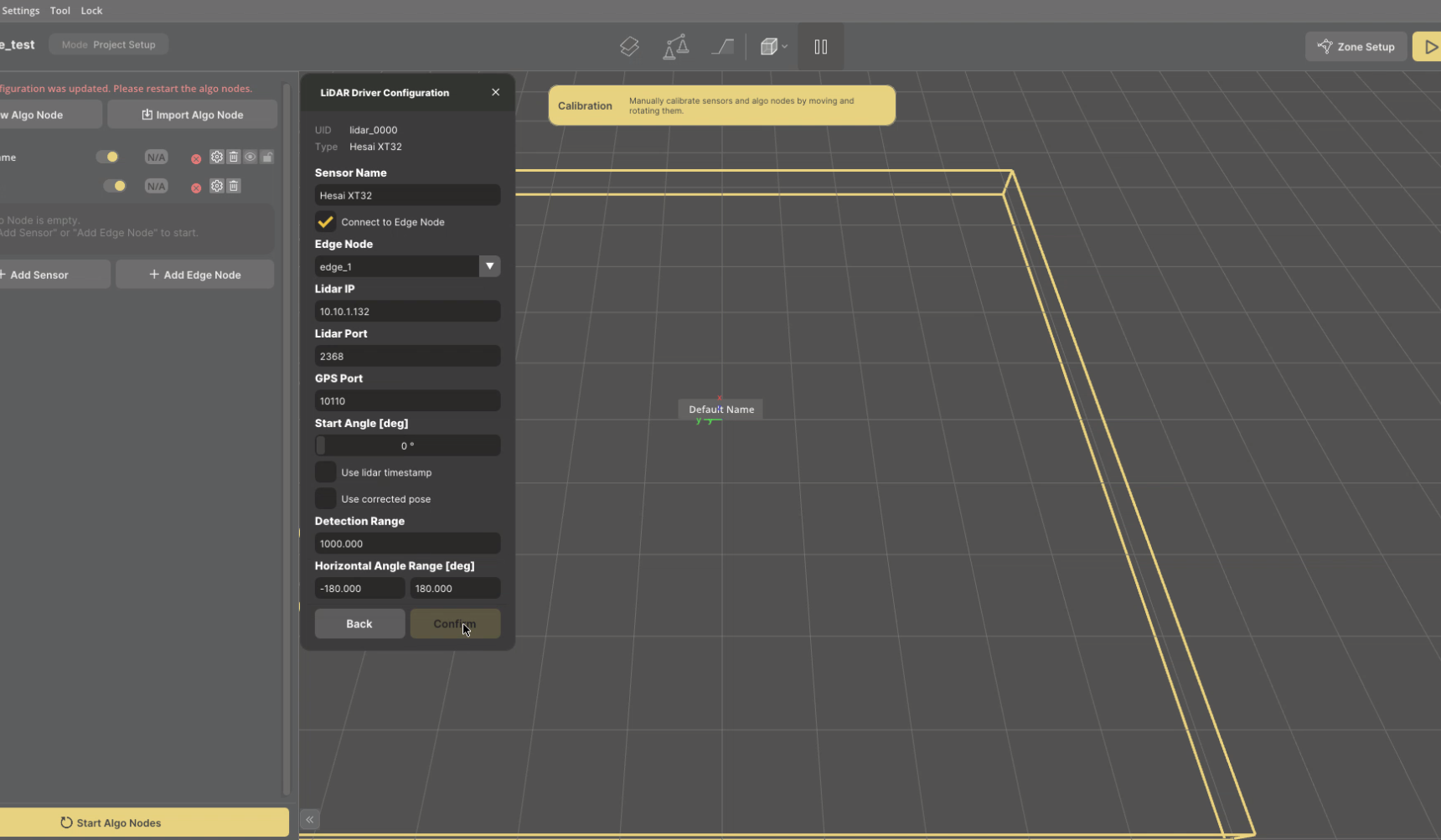
By following these steps, Algo nodes will get the data through Edge nodes with reduced data amount.